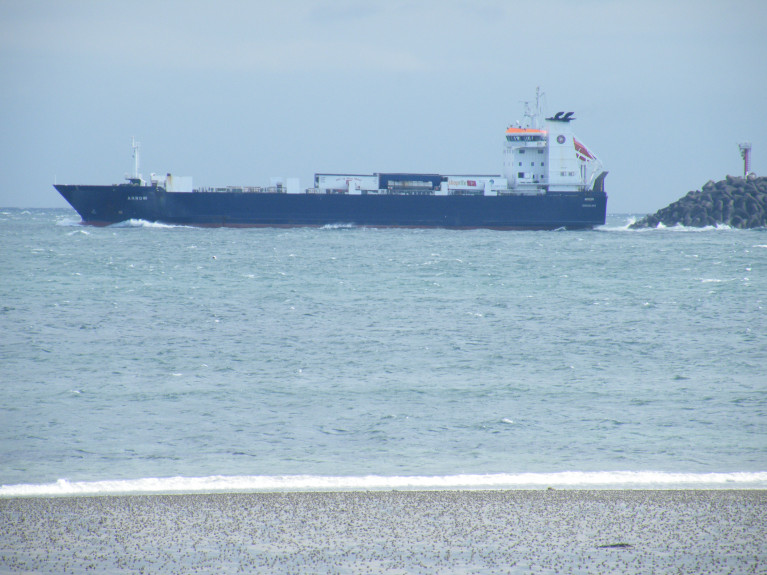Displaying items by tag: Storm Arwen
Afloat tracked yesterday Irish Sea freight ferry MV Arrow to the Port of Larne, having departed Douglas Harbour on Sunday, however the crossing was separate to any requirements of the Isle of Man Steam Packet, writes Jehan Ashmore.
According to a spokesperson on behalf of the IOMSPCo, the chartered in ro-ro vessel MV Arrow was brought to Manx waters to assist with additional freight prompted by adverse weather conditions over the weekend. The bad weather been in the form of Storm Arwen.
Prior to Arrow's arrival at the Co. Antrim ferry port (see Brexit Boost story) the freighter carried out duties for the Steam Packet's main route from Heysham to Douglas. This took place (in the early hours) of Sunday morning to assist with freight demand using the vessel's 1,057 lane metres of freight, which equates to approximately 65-trailer units.
As the Steam Packet website also cited, the charter was also due to disrupted sailings at the weekend with Friday's Ben-my-Chree (conventional ferry) sailings to Heysham which were cancelled for the same reason.
It is almost a decade since Seatruck Ferries placed Arrow into a long-term charter agreement with the IOMSPCo as an additional support vessel for freight or as an emergency replacement vessel. More recently the ship which is now owned by investment bank Fortress, continues however to retain a link with Seatruck Ferries which provides crewing and management.
In addition, the Arrow's routine back-up role took hold of such circumstances by providing transport of essential food and goods for islanders. Also the re-deployment of the freighter released more ferry vehicle deck space for motoring passengers affected by the weather disruption once ceded.
Following discharge of freight traffic at the Manx capital, Arrow set off late in the morning of last Sunday and arrived at the Port of Larne some seven hours later.
Arrow usually when not operating on short-term charters to other companies goes into lay-over mode in Larne by berthing at the Continental Quay and without impacting other users. The port's relative proximity permits a short passage time between Northern Ireland and the Isle of Man.
In the meantime, Arrow currently remains in Larne where P&O Ferries runs the shortest and fastest crossing to Scotland on the North Channel route that takes just 2 hours. To enable 12 departures a day, ropax pair European Causeway and half-sister European Highlander operate the link.
This route is in competition with Stena Line though out of Belfast Harbour on a slighty longer passage time of 2 hours 15 minutes and served by Superfast's VI and VII respectively.
Whereas, Seatruck, the Irish Sea's only dedicated freight operator this year celebrated its 25th anniversary of operations having revived Merchant Ferries Warrenpoint-Heysham route in 1996 with the newcomer's first crossing from Carlingford Lough was undertaken by Bolero.
This vessel was chartered in on the Co. Down-Lancashire link and what stemmed from this service, steadily grew and led to an expansion of routes across the Irish Sea.
Trail of Destruction Around Britain’s Coastline in Wake of Storm Arwen
Video footage shows some of the havoc wreaked by Storm Arwen in marinas and coastal communities as it swept across Great Britain over the weekend.
According to Marine Industry News, marinas and shipyards around the UK coast reported “unprecedented levels of damage” following the storm that prompted a rare red weather warning from the Met Office.
In the Lake District, one marina business reported more than 60 boats swept ashore. And in western Scotland and Wales, the RNLI and local lifeboats called out to separate boats in distress.
Marine Industry News has more on the story HERE.
























































